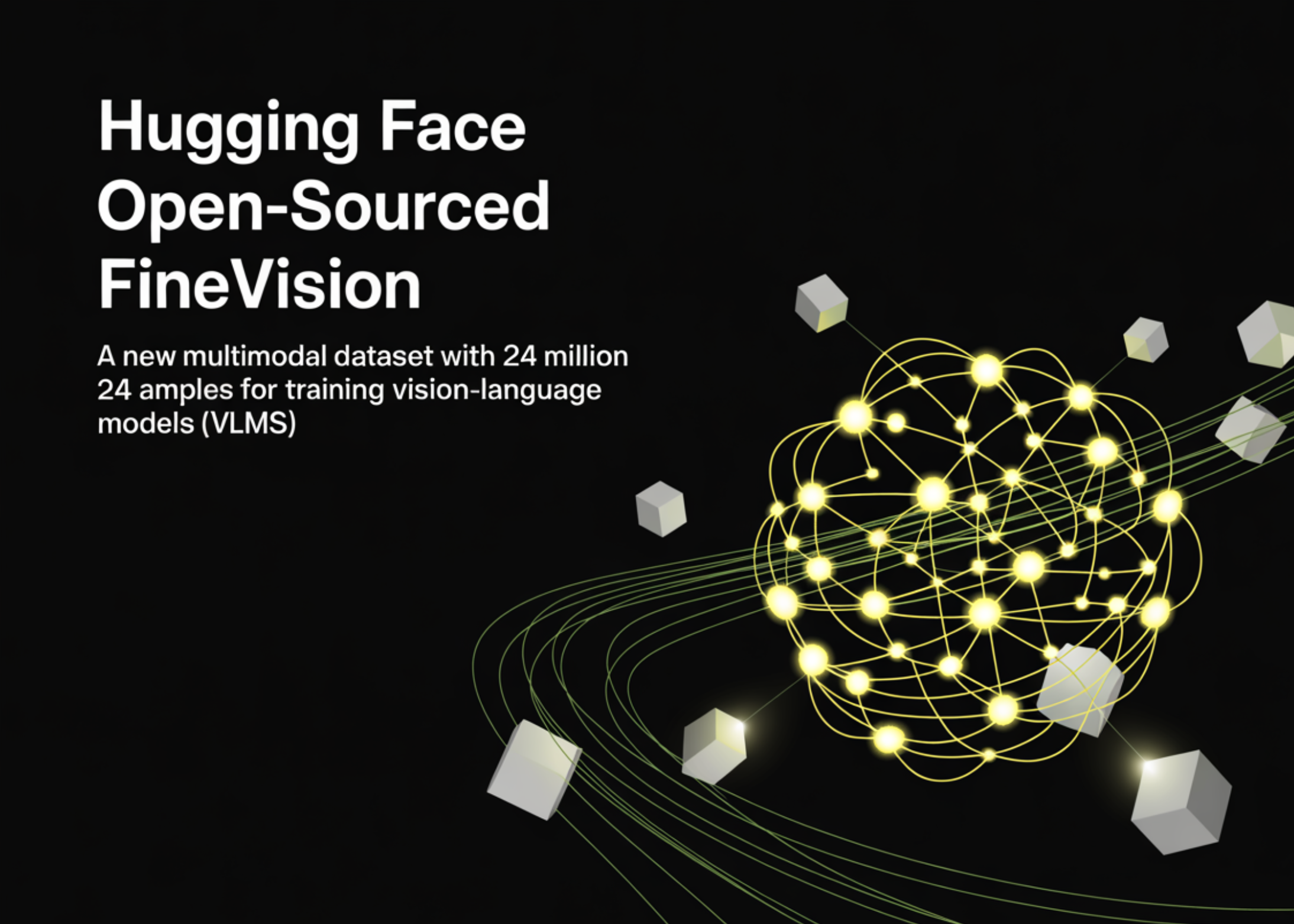Blog
Hugging Face Open-Sourced FineVision: A New Multimodal Dataset with 24 Million Samples for Training Vision-Language Models (VLMs)

Introduction to FineVision
Hugging Face has recently unveiled FineVision, a groundbreaking multimodal dataset that comprises an impressive 24 million samples. This comprehensive dataset is designed to empower the development and training of Vision-Language Models (VLMs), a rapidly evolving area of artificial intelligence. By integrating image and text data, FineVision aims to enhance how machines understand and interpret visual and textual information in unison.
What is FineVision?
FineVision is distinguished by its sheer scale and quality, making it a major contribution to the field of machine learning. The dataset harmoniously combines visual data—images and videos—with corresponding textual descriptions, thus enabling VLMs to learn from rich and diverse inputs. This integration allows machines to grasp context, nuances, and intricate relationships between visual and textual elements.
Importance of Multimodal Datasets
Multimodal datasets like FineVision are vital in advancing AI capabilities. Traditional models often rely on single data types, which can limit their effectiveness in real-world applications. By incorporating visual and textual elements, VLMs can achieve a more comprehensive understanding of contexts. Here are some key benefits of using multimodal datasets:
- Enhanced Understanding: By analyzing images alongside text, models can become better at interpreting context, leading to more accurate predictions and responses.
- Improved Generalization: Multimodal datasets encourage models to generalize better across different tasks, making them more versatile in varied applications.
- Advancement in Applications: From automated image captioning to visual question answering, multimodal datasets expand the potential use cases of AI in fields like content creation, customer service, and education.
Features of the FineVision Dataset
The FineVision dataset stands out due to several innovative features.
Extensive Diversity
With 24 million samples, FineVision offers a wealth of information from various sources, ensuring a broad representation of visual and textual scenarios. This diversity helps models learn from a comprehensive array of perspectives and contexts.
Quality of Data
Hugging Face has prioritized the quality of its dataset. Each sample in FineVision has undergone rigorous filtering and validation processes, ensuring that the data is not only abundant but also relevant and accurate.
Accessible Format
FineVision has been structured to be user-friendly. This accessibility allows researchers and developers to easily manipulate and integrate the dataset into their training workflows, making it a go-to resource for projects aimed at creating sophisticated VLMs.
Potential Use Cases
FineVision presents numerous use cases that can revolutionize various industries. Here are just a few:
Automated Content Generation
Content creators can leverage VLMs trained on FineVision to generate images and corresponding text. This can enhance the workflow for marketers, bloggers, and social media managers, providing them with tools to create engaging content quickly.
Visual Question Answering
FineVision enables the development of systems that can answer questions posed in natural language about visual content. This application is especially useful in educational contexts, where students can query images and receive informative responses, enhancing the learning experience.
Improved Accessibility
AI applications tuned with FineVision can better serve individuals with disabilities. For instance, automated systems can provide detailed descriptions of visual content, making information more accessible to visually impaired users.
Challenges and Considerations
While FineVision is a breakthrough in the field of multimodal datasets, it also presents certain challenges that researchers and developers need to consider.
Bias in Data
Like any dataset, FineVision is not immune to biases that may exist within the data sources it compiles. It is crucial for developers to remain vigilant about the potential implications of these biases in AI applications, as they can lead to skewed or unfair outcomes.
Computational Demands
Training models on a dataset as large as FineVision can be resource-intensive. Organizations must ensure they have the necessary computing power and infrastructure to leverage this dataset effectively.
Continuous Evaluation
As VLMs evolve, so too should the datasets that feed them. Continuous evaluation and refinement of FineVision will be necessary to keep pace with advancements in technology and shifts in societal needs.
Future Implications
The introduction of FineVision heralds a new era for multimodal machine learning. The dataset’s potential to influence a variety of sectors cannot be overstated. As researchers harness the power of FineVision, we can expect innovations in areas such as healthcare, autonomous vehicles, and augmented reality.
Collaboration and Community Engagement
Hugging Face emphasizes collaboration within the AI community. By open-sourcing FineVision, the organization invites researchers, developers, and enthusiasts to engage with the dataset, experiment, and contribute to its evolution. This collaborative approach fosters an environment of shared knowledge, accelerating advancements in the field.
Conclusion
FineVision by Hugging Face represents a monumental step forward in the realm of multimodal datasets. With its extensive collection of 24 million samples, it promises to drive innovation in Vision-Language Models, enabling machines to understand and analyze visual and textual data more effectively. As we look to the future, the applications and benefits of FineVision are boundless, paving the way for smarter, more capable AI systems. By embracing collaborative efforts and responsibly addressing the challenges associated with data and bias, the AI community can fully realize the potential that FineVision has to offer.

